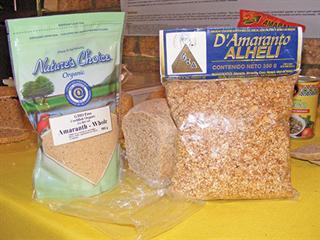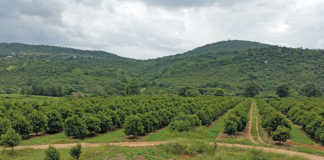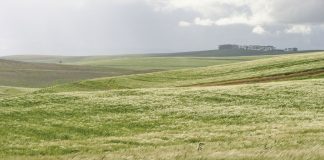
A group of plants, collectively referred to as pseudo-grains, may be the start of an exciting chapter in the history of South African agriculture. The term pseudo-grains refers to grains produced by broad-leafed plants, in contrast with other grains, which are produced by grasses. Three pseudo-grains – quinoa (Chenopodium quinoa), grain amaranth (Amaranthus cruentus, A. hypochondriacus and A. caudatus) and buckwheat (Fagopyrum esculentum) – are globally recognised and utilised.
Grain amaranth and quinoa belong to the related plant families Amaranthaceae and Chenopodiaceae and originated in South and Central America, whereas buckwheat, a member of the family Polygonaceae, has its origin in Central Asia. The discarding of South American-based pseudo-grains can probably be laid at the feet of Spanish conquistadores who prohibited production of these grains in their efforts to subdue local tribes. The natives’ practice of mixing amaranth grain (which was produced on par with maize) with human blood during local ceremonies didn’t help matters and effectively prevented export of these valuable crops.
Pseudo-grains share several important traits. They have stood the test of time, having been cultivated for thousands of years. They are produced by hardy plants with relatively short to very short growing seasons. And they have a high protein content and contain no gluten.
Pseudo-grains in South Africa
Pseudo-grains have received little attention in South Africa and have not been produced on a scale comparable to that of traditional grains. The first record of amaranth production in South Africa dates back to the 1990s. Considerable efforts were made between 1994 and 1996 by the North West Department of Agriculture and Rural Development and Free State University, in collaboration with the then Bothaville-based Tamco company, to investigate commercial leaf production from Amaranthus hybridus in South Africa. Emphasis was placed on a regimen of repeated harvesting, alternating with periods of regrowth.
The first attempts at producing amaranth grain were made at Roodeplaat by the Agricultural Research Council’s Vegetable and Ornamental Plant Research Institute (VOPI) during the 2000/2001 and 2001/2002 planting seasons. This introduction of grain amaranth formed part of an incentive to produce grain for the European market. The project was started as a joint venture between VOPI and a company based in Germany and Austria.
These attempts at grain production were not sustainable because the focus was on organic production, which proved too difficult given the allocated time-frame for implementation. Less favourable climatic conditions for organic production in South Africa also played a part in preventing successful grain production. In spite of the project’s failure, efforts towards grain production made at VOPI proved that amaranth grain production was possible in this country.
The current drive for the development of pseudo-grains was initiated by the North West department of agriculture. The NuGrainSA Consortium has made use of dormant capacity in the institutions previously involved – the Free State University and ARC VOPI. In addition, North-West University has added considerable value to the initiative, especially in industrial development and food technologies. This inter-institutional and inter-disciplinary approach looks set to meet with success.
A promising future
Pseudo-grains present the industry with many opportunities and possibilities. There is a potential to fortify existing grain products due to the low gluten and high protein content of pseudo-grain flour. Protein quality, rather than content, becomes important in this instance when considering its full value. Pseudo-grains have a highly favourable amino-acid spectrum with scarce amino-acids such as lysine (a limiting nutritional factor in traditional grains) present in high quantities.
Pseudo-grains are also high in arginine and histidine, essential for the development of infants and young children. Preliminary results on biofuel research, obtained since 2011, indicate that plant residues from grain amaranth cultivation could become invaluable for bio-ethanol or bio-diesel production in South Africa in future. Amaranth grain may also become an important source of squaline, which is currently extracted from shark livers.
Quinoa was recognised for its nutritional and economic potential when it was declared United Nations crop of the year for 2013. Quinoa plants are known for their adaptability and can survive temperatures as low as -8°C (prior to flowering) or tolerate temperatures as high as 38°C. Cultivation can be done at elevations ranging from sea level up to 4 000m above sea level. Recent years have seen rapid global expansion in quinoa production, and cultivation has spread into North America, Europe, Kenya and India.
Production in the traditional quinoa-growing areas of Peru and Bolivia, responsible for 50% of current world output, has increased by 32,4% and 27,5% respectively since 2008. Quinoa shows potential for grain and animal fodder production in areas of limited agricultural potential in South Africa.
Economic benefits and marketing
The introduction of new staple crops could hold many benefits in South Africa, such as diversifying the country’s agricultural sector and improving overall food security. However, optimism should be tempered with caution. As yet, no markets other than a limited health niche market exist for pseudo-grains in South Africa. Markets should be developed cautiously, as branding of potential staple food products as health foods may stifle future expansion of pseudo-grain markets.
Production factors such as small grain size (especially with amaranth), lack of chemical pesticide registrations and a large vacuum in general agronomic data will have to be dealt with through intensive research programmes that will require appropriate funding.
Phone William Weeks, North West Department of Agriculture and Rural Development, on 018 299 6538 or e-mail [email protected].













